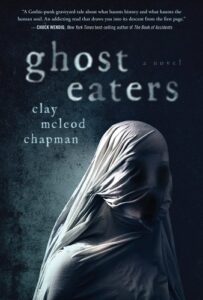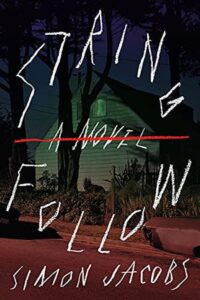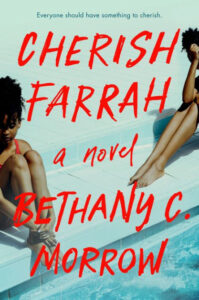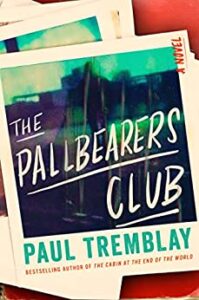The new renaissance of horror fiction came to my attention just last year, when the number of books hit such a critical mass I couldn’t help but notice, but the return of the spookiest genre to the highest levels of acclaim has been building for some time. Right now, if you speak with anyone in America, they’ll probably say that horror cinema is where the most relevant stories are being told today, and I’d argue the same for horror fiction, where our wildest fears meet our darkest realities, and every moment holds potential for either shocking violence or even more shocking kindness. Without further ado, here are the 12 best horror novels of 2022, followed by a list of notable favorites.

Erin E. Adams, Jackal
(Ballantine)
As Jackal begins, Liz Rocher has reluctantly headed home to Johnstown, Pennsylvania for her childhood best friend’s wedding. She’s prepared for the micro-aggressions from her friend’s racist family, but during the celebration something far worse happens—a beloved child goes missing, and the key to her disappearance stretches back over decades of missing children, all of them young Black girls last seen around the summer solstice. Meanwhile, a spirit in the woods is close to taking corporeal form and rejecting the bonds of its human master. A social thriller perfect for fans of Jordan Peele, Jackal also comfortably rides the folk horror wave. Like Bethany C. Morrow’s Cherish, Farrah, Jackal also asks compelling questions about who society values as worthy of protection, and the true nature of monstrosity.

Gretchen Felker-Martin, Manhunt
(Tor Nightfire)
I dub this the great Terf-pocalypse novel. A found family must navigate complex dynamics between themselves, also while killing a whole lot of feral men and TERFs. In a dystopian scenario where a plague attacks testosterone levels, trans women are able to successfully keep the disease at bay by hunting the now feral men and eating their balls, as well as processing various plants for estrogen. Meanwhile, the TERFs are spreading hate against trans women by warning of the dangers of what happens when testosterone gets high enough to activate the plague, despite so many successfully fending it off. Oh, and a rich girl in a bunker does some really weird shit. I cannot underscore enough how much I love this novel.

Clay McLeod Chapman, Ghost Eaters
(Quirk)
What if you could take a drug that showed you the souls of those who haunted you? And what if you took too much of that drug, and started seeing the dead everywhere? In Ghost Eaters, a group of college friends is left bereft when one of them overdoses, but taking a drug called Ghost may help them talk with their lost friend once more. Chapman sets his novel in Richmond, Virginia, and this Southern Gothic ghost story uses its setting well to explore the not-even-past history of the South.

Simon Jacobs, String Follow
(MCD/FSG)
String Follow reads kind of like if the Ice Storm was a horror story. In a suburb where teens are growing up, getting out, and learning to hate, an evil presence seeks to guide them into destructive behavior. But not just any bad behavior—like the internet, the presence merely exacerbates what was already there to begin with. Moody, quirky, and funny, this is the perfect possession story for the social media age.

Gabino Iglesias, The Devil Takes You Home
(Mulholland)
Gabino Iglesias’s break-out novel is pure noir, as bleak and brutal as they come. A man living a hard-scrabble life on the margins finds himself in need of quick cash after a personal tragedy. He first finds work as a hitman before stumbling across another opportunity—the chance to hijack a narco-convoy coming up from Mexico. Beautifully written and absolutely devastating, The Devil Takes You Home heralds the ascent of a major crime writer.

Bethany C. Morrow, Cherish Farrah
(Dutton)
Cherish Farrah is a stunning one-two punch of social horror and psychological thriller. When Farrah’s family loses their home, they face a stark choice for their daughter: either bring her with them to a new job in a new state, or leave her to stay with her best friend Cherish in their wealthy country club community. Compared to Farrah’s hard-edged parents, Cherish has the kindest, most loving parents imaginable, but do they really love Farrah the way they love their own daughter? Or is Farrah just playing a bit part in the Story of Cherish? Cherish Farrah, like The Other Black Girl, uses genre fiction to explore the consequences of a society that makes space for “only one”.

Nat Cassidy, Mary
(Tor Nightfire)
It’s a time in life we’re all taught to fear. That moment women become invisible, disposable. Possessed? Haunted? Wait, those aren’t the symptoms of menopause! Except for in Nat Cassidy’s Mary, where the great life transition becomes a chance to write a bloody, visceral, and oh-so-entertaining take-down of misogyny. Mary has a simple premise—what if the damaged child who was Carrie had lived to middle age? And what if, perhaps, she got a new chance at vengeance? One of the best horror novels of the year, and destined to become a cult classic, Mary, like its heroine, is not to be sidelined.

Sarah Gailey, Just Like Home
(Tor)
Sarah Gailey’s Just Like Home represents to me the ultimate kindness of horror, where we’re often allowed a chance to see outcasts find love and acceptance amidst the blood and viscera. Their difficult-to-categorize novel attempts to answer an impossible question: how do you stop loving someone who’s done irreparable harm to others, but always treated you well? The narrator of Just Like Home has returned to her infamous house to care for her dying mother, and to remember her serial killer father. Those who enjoyed the haunted house aspect of the book will be pleased to know there are plenty more books exploring the geographies of possessions and hauntings coming out next year.

Ramona Emerson, Shutter
(Soho)
Shutter is impossible to classify, a literary horror novel and timely investigation, gorgeously written and ingeniously constructed. An indigenous crime scene photographer who hears the voices of the dead finds her careful existence shattered by the pleas of a murdered young woman to find her killer. Ramona Emerson also gives truly wonderful book talks for those who want to fill out their understanding of the book and its context.

Rudy Ruiz, Valley of Shadows
(Blackstone)
In the mid-19th century, the Mexican-American War (or the Great Theft) and the French invasion of Mexico loom large in the Rio Grande Valley’s recent memories, and tensions between Anglo and Mexican residents are growing, as a shocking crime threatens to turn Anglo prejudice to violence. It’s up to veteran Solitario Cisneros, cursed but capable, and the Apache-Mexican vision-seer Onawa, to find three missing children and uncover the unearthly horror that killed their family before the whole valley ignites.

Paul Tremblay, The Pallbearers Club
(William Morrow)
The Pallbearers Club is a metatextual meditation on the nature of narrative itself—the text features notes scribbled in the margins from a skeptical reader who knows there is more to the story than the narrator is willing to reveal, and certainly a version of the story to be told that is less flattering to the narrator’s image of himself. The narrator’s version of the story: he made a friend, they formed a club, then scary things began happening whenever his friend is around. The version in the margins: the narrator is deeply, dangerously wrong, and must be corrected, in his manuscript and in his life.

Erika T. Wurth, White Horse
(Flatiron)
Erika T. Wurth’s White Horse is part horror novel, part detective story, as a haunted woman finds herself compelled to investigate her mother’s long-ago disappearance. Why did her mother leave her at two days old? Why did no one listen to her father when he suspected foul play? How many others have gone missing the exact same way? What is her mother trying to tell her through the visions she sees when she wears her mother’s powerful beaded bracelet? And what is the horrifying presence she’s accidentally conjured into this world, along with her mother’s ghost? White Horse, like the bar in the story it takes its title from, is gritty, haunting, understated, and beautiful. Erika T. Wurth is of Apache, Chickasaw, and Cherokee descent, and sets out to capture the urban Native experience while also doing justice to deeply rooted spiritual beliefs and practices.
Notables
Luke Dumas, A History of Fear (Atria) · Ashton Noone, Vicious Creatures (Scarlet) · Kristi Demeester, Such a Pretty Smile (St Martins) · Alma Katsu, The Fervor (Putnam) · Ella King, Bad Fruit (Astra) · R.J. Jacobs, Always the First To Die (Sourcebooks Landmark) · S.A. Barnes, Dead Silence (Tor Nightfire) · Hiron Ennes, Leech (Tordotcom) · Michael Seidlinger, Anybody Home? (Clash) · Jason Rekulak, Hidden Pictures (Flatiron) · Kristi Demeester, Such a Pretty Smile (St Martins) · Malcolm Devlin, And Then I Woke Up (tordotcom)

















